-
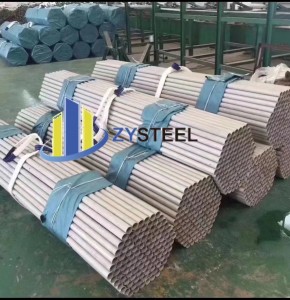
316 stainless steel pipe
Metals used in petroleum, chemical, medical, food and light industry
316 stainless steel pipe is a kind of hollow long round steel, which is widely used in oil, chemical, medical, food, light industry, mechanical instruments and other industrial transmission pipelines and mechanical structural components. In addition, when the bending and torsional strength are the same, the weight is relatively light, so it is also widely used to manufacture mechanical parts and engineering structures. It is also commonly used to produce various conventional weapons, barrels, shells, etc.
The maximum carbon content of 316 stainless steel pipe is 0.03, which can be used in applications where annealing is not allowed after welding and maximum corrosion resistance is required.
316 and 317 stainless steels (see below for the properties of 317 stainless steels) are molybdenum containing stainless steels.
The overall performance of this steel is better than 310 and 304 stainless steel. At high temperature, when the concentration of sulfuric acid is lower than 15% and higher than 85%, 316 stainless steel has a wide range of uses.
316 stainless steel plate, also known as 00Cr17Ni14Mo2, corrosion resistance:
The corrosion resistance is better than 304 stainless steel, and it has good corrosion resistance in the production process of pulp and paper.
The carbide precipitation resistance of 316 stainless steel is better than that of 304 stainless steel, and the above temperature range can be used.
Varieties: 316 stainless steel tubes, 316 stainless steel bright tubes, 316 stainless steel decorative tubes, 316 stainless steel capillary tubes, 316 stainless steel welded tubes, 304 stainless steel tubes.
The maximum carbon content of 316L stainless steel pipe is 0.03, which can be used in applications where annealing is not allowed after welding and maximum corrosion resistance is required.
5 Corrosion resistance
11 316 stainless steel cannot be hardened by overheating.
12 Welding
13 Typical uses: equipment for pulp and paper making, heat exchanger, dyeing equipment, film processing equipment, pipelines, materials for the exterior of buildings in coastal areas
-
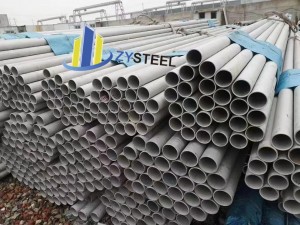
304 stainless steel pipe
Yield strength (N/mm2) ≥ 205
Tensile strength ≥ 520
Elongation (%) ≥ 40
Hardness HB ≤ 187 HRB ≤ 90 HV ≤ 200
Density 7.93 g · cm-3
Specific heat c (20 ℃) 0.502 J · (g · C) – 1
Thermal conductivity λ/ W (m · ℃) – 1 (at the following temperature/℃)
20 100 500 12.1 16.3 21.4
Coefficient of linear expansion α/ (10-6/℃) (between the following temperatures/℃)
20~10020~200 20~300 20~400
16.0 16.8 17.5 18.1
Resistivity 0.73 Ω · mm2 · m-1
Melting point 1398~1420 ℃
As stainless and heat-resistant steel, 304 steel pipe is the most widely used equipment for food, general chemical equipment and atomic energy industry.
304 steel pipe is a kind of universal stainless steel pipe, which is widely used to make equipment and parts requiring good comprehensive performance (corrosion resistance and formability).
304 steel pipe has excellent rust and corrosion resistance and good intergranular corrosion resistance.
304 steel pipe material has strong corrosion resistance in nitric acid below boiling temperature with concentration ≤ 65%. It also has good corrosion resistance to alkali solution and most organic and inorganic acids. A kind of high alloy steel that can resist corrosion in the air or in the chemical corrosion medium. Stainless steel is a kind of steel that has beautiful surface and good corrosion resistance. It does not need to undergo surface treatment such as color plating, but gives full play to the inherent surface properties of stainless steel. It is used in many aspects of steel, usually called stainless steel. High alloy steels such as 13 chromium steel and 18-8 chromium-nickel steel are representative of properties.
As stainless and heat-resistant steel, 304 steel pipe is the most widely used equipment for food, general chemical equipment and atomic energy industry.
-

201 stainless steel pipe
Marking method
201 stainless steel pipe – S20100 (AISI. ASTM)
American Iron and Steel Institute uses three digits to mark various standard grade malleable stainless steel floors. Including:
① Austenitic stainless steel is marked with 200 and 300 series of numbers;
② Ferritic and martensitic stainless steels are represented by 400 series numbers.
For example, some common austenitic stainless steels are marked with 201, 304, 316 and 310, ferritic stainless steels are marked with 430 and 446, martensitic stainless steels are marked with 410, 420 and 440C, and duplex (austenitic-ferritic) stainless steels, precipitation hardening stainless steels, and high alloys with iron content less than 50% are usually patented or trademarked.
Purpose performance
201 stainless steel tube has the characteristics of acid resistance, alkali resistance, high density and no pinhole. It is used to produce various high-quality materials such as case and bottom cover of watch band. 201 stainless steel pipe can be mainly used in decorative pipe, industrial pipe and some shallow stretched products. Physical properties of 201 stainless steel pipe
1. Elongation: 60 to 80%
2. Tensile stiffness: 100000 to 180000 psi
3. Elastic modulus: 29000000 psi
4. Yield stiffness: 50000 to 150000 psi
A.Round steel preparation; B. Heating; C. Hot rolled perforation; D. Head cutting; E. Pickling; F. Grinding; G. Lubrication; H. Cold rolling; I. Degreasing; J. Solution heat treatment; K. Straightening; L. Pipe cutting; M. Pickling; N. Finished product inspection.
-

stainless steel pipe
Standard: JIS AISI ASTM GB DIN EN BS
Grade: 201, 202, 301, 302, 303, 304, 304L, 310S, 316, 316L, 321, 410, 410S, 420,430, 904L, etc
Technique: Spiral welded, ERW, EFW, Seamless, Bright annealing, etc
Tolerance: ± 0.01%
Processing service: bending, welding, decoiling, punching, cutting
Section shape: round, rectangular, square, hex,oval, etc
Surface finish: 2B 2D BA No.3 No.1 HL No.4 8K
Price term: FOB,CIF,CFR,CNF,EXW
Payment term: T/T, L/C
-

3087 low pressure boiler tube
Seamless steel pipe is a kind of round, square and rectangular steel with hollow section and no joints around Seamless steel pipe is made of steel ingot or solid tube blank through perforation, and then hot rolled, cold rolled or cold drawn Seamless steel pipe has a central control section and is widely used as a pipeline for conveying fluid. Compared with solid steel such as round steel, the steel pipe has the same bending and torsional strength and is lighter. It is an economic section steel. It is widely used in the manufacture of structural parts and mechanical parts, such as oil drill pipe, automobile transmission shaft, bicycle frame and steel pipe used in construction
-
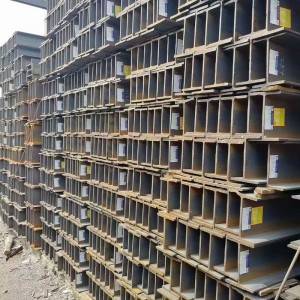
Construction steel
Steel channel is a hot-rolled carbon steel made in a “C” shape. Constructed using a vertical web and top and bottom horizontal flanges with inside radius corners, it is available in a wide range of sizes and thicknesses. The shape provides superior structural support, making it an ideal product for frames and braces used for machinery, enclosure, vehicle, building and structural support applications. Handy Steel Stocks supplies Black Channel 300+, Duragal Channel and Hot Dipped Channel. Steel... -

Non standard flange
Scope of application: Boiler and pressure vessel, petroleum, chemical industry, shipbuilding, pharmacy, metallurgy, machinery, stamping elbow, food and other industries
-
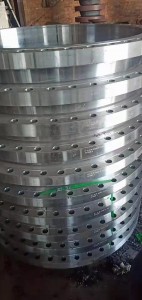
Stainless steel non-standard flange
Scope of application: Boiler and pressure vessel, petroleum, chemical industry, shipbuilding, pharmacy, metallurgy, machinery, stamping elbow, food and other industries
-

Galvanized pipe
Galvanized pipe, also known as galvanized steel pipe, is divided into hot-dip galvanizing and electro galvanizing. The hot-dip galvanizing layer is thick and has the advantages of uniform coating, strong adhesion and long service life. The cost of electro galvanizing is low, the surface is not very smooth, and its corrosion resistance is much worse than that of hot-dip galvanized pipe.
-
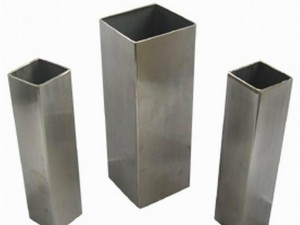
Hot dip galvanized pipe
Hot dip galvanized pipe, in order to improve the corrosion resistance of steel pipe, general steel pipe is galvanized. Galvanized steel pipes are divided into hot-dip galvanizing and electro galvanizing. The hot-dip galvanizing layer is thick, the cost of electro galvanizing is low, and the surface is not very smooth.
-

Channel
Channel steel channel steel is a long strip steel with groove shaped section, which belongs to carbon structural steel for construction and machinery. It is a section steel with complex section, and its section shape is groove shape. Channel steel is mainly used for building structure, curtain wall engineering, mechanical equipment and vehicle manufacturing.
-
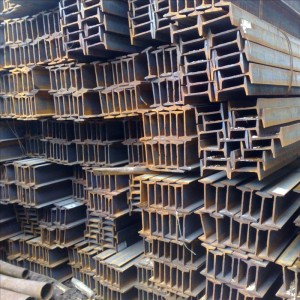
235 channel steel indentation
Channel steel is a long strip steel with groove section, which belongs to carbon structural steel for construction and machinery. It is a section steel with complex section, and its section shape is groove shape. Channel steel is mainly used for building structure, curtain wall engineering, mechanical equipment and vehicle manufacturing.